i bc27f85be50b71b1 (223 page)
Read i bc27f85be50b71b1 Online
Authors: Unknown
the coagulation factors, prothrombin time (PT) and partial thromboplastin time (PTT). Alteration in liver function is reflected very early by prolonged coagulation times. A steady downward trend to
normalization of the PT and PTT should occur postOperatively. 12
3.
The liver function teSts (LITs) should reveal a progressive
decline after transplantation. The exact values can vary from patient to
patient. For example, if the recipient tequired large amounts of blood
transfusion, the initial LIT levels may be low secondary to hemodilution. More accurate levels are determined 6-12 hours after surgery.12
4.
In the immediate postoperative period, hypokalemia is
another sign that the liver is functional. Once the graft is vascularized, hepatOcytes extract potassium from the blood. On the other hand, hyperkalemia often signifies cell death and that the hepatOcytes are nonfunctional.ll
5.
Hyperglycemia also indicates that the liver is able to stOre
glycogen and convert it to glucose.
Postoperative Care alld COlllplicatiOlls
Postoperatively, liver transplam recipiems may emerge with three
Jackson-Pratt (JP) suction drains and a biliary T tube. The Jp drains
lie over the superior surface of the liver and drain blood-tinged fluid.
Two of the Jp drains are removed within the first 48 hours of surgery.
The last JI' drain is removed approximately 7 days after surgery, in
the absence of a biliary leak.7•1' The T tube, which is placed in the bile
duct, remains in place for lip to -12 weeks postoperatively. The
amollnt, color, and consistency of the bile are monitored. The T tube
is clamped once the bilirubin level falls below 2.5 mg/dl.?" (The reference range of tOtal bilirubin is 0.1-1.0 mg/dl.)



716
AClITE CARE HANDBOOK FOR PHYSICAl THERAI'I5TS
Primary graft failure is a sign of acute hepatic failure that may be
seen immediately postoperatively. It is characterized by a markedly
abnormal liver function; prolonged PT, PTT, or both; oliguria; metabolic acidosis; hyperkalemia; hypoglycemia; and coma. In the event of primary graft failure, retransplantation is immediately required.
Potential medical compl ications include post-transplant diabetes,
abscess, atelecrasis, and pneumonia secondary to ascites or peritonitis. 6 Acute rejection specific to a transplanted liver includes elevated LITs (especially an increase in bilirubin and prolonged PT, PTT, or
both); jaundice; right upper quadrant pain; clay-colored stools; teacolored urine; decreased quantity of bile; thin, watery, light-colored bile through the T tube; and increased ascitic drainage. If rejection is
identified, immunosuppressive drug doses are increased.
A liver biopsy is the definitive diagnostic test for rejection and is
performed at bedside. It can distinguish between early rejection
and ischemic injury. Mild rejection will result in elevated serum
transaminase or alkaline phosphatase, whereas an elevated serum
glutamicoxaloacetic transaminase and serum glutamate-pyruvate
transaminase may indicate hepatocellular damage associated with
rejection.19
Surgical complications include hepatic artery thrombosis, biliary
leak, or stricture. These complications present with a rising bilirubin
level and are identical in appearance to an acute rejection episode.19
Consequently, recipients undergo routine Doppler ultrasound of the
abdomen to check for fluid collections and patency of the hepatic
arrery and porral vein.19 A cholangiogram, which examines the
patency of the biliary tree drainage system, may be performed to rule
out bile duct obstruction. Surgical intervention is indicated if the biliary obstruction cannot be corrected by a percutaneous transhepatic cholangiogram. Porral vein thrombosis is evident if ascites persists or
variceal hemorrhage develop .13
Clinical Tip
• Postoperatively, many recipients still have ascites from
weeping of sodium- and albumin-rich fluid from the liver's
surface' Along with ascites and postsurgical fluid retention, liver transplant recipients have an increased abdominal girth and lower-extremity edema that lead to a shift in the patient'S center of gravity and impaired balance. Often,
patients have an increase in lumbar lordosis and complain
of low back pain.


ORGAN TRANSI)LANTATION
717
• Deep breathing and physical activity are beneficial during the early postoperative course. Liver transplant recipients are susceptible ro atelectasis and pneumonia because of the long operative procedure and large incision that hinders full chest expansion and cough effectiveness.
Pancreas Transplantation
Indication for Pancreas Transplant
Pancreas transplant candidates have insulin-dependent, type 1 diabetes mellitus and are preuremic (without urea in the blood). These patients have severe brittle diabetes and metabolic imbalances, such
as hypoglycemic unawareness and subcutaneous insulin resistance.3l,32
P ancreas transplantation attempts to stabilize or prevent the devastating target organ complications of type 1 diabetes by returning the patient to normoglycemia and improving the patient's q uality of
life." Ideally, pancreas transplantation should be performed before
secondary complications of diabetes, such as retinopathy, peripheral
neuropathy, vasculopathy, and end-stage renal disease, develop. Pancreas transplantation has been demonstrated ro inhibit the progression of neuropathy and reverse diabetic nephropathic lesions in native kidneys after 5- 1 0 years, but it has not been shown to stop severe retinopathy or vascular diseasc .32 Because pancreas transplantation is not a life-saving procedure, the patient's condition is evaluated
carefully to determine whether the benefits outweigh the risks of
transplantation.
Contra indications to pancreas transplantation include the
foliowingJ2:
• Severe cardiovascular disease
• Major amputation
• Complete bl indness
• Morbid obesity
• Active smoking
Living donor pancreas transplantation, in which the segment of the
body and tail of the pancreas are used from a living donor, may be


